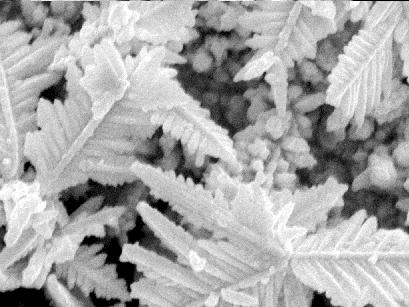
Keywords: Scanning Electron Microscope (SEM), microscopy, automatic focus, autofocus, depth-from-defocus (DFD), astigmatism, aberration, predictive, modulation transfer function (MTF), point spread function (PSF).
A copy of the thesis can be found here.
This work outlines the development of a general imaging model for use in autofocus, astigmatism correction, and resolution analysis. The model is based on the modulation transfer function of the imaging system in the presence of aberrations, in particular defocus. The extension of the model to include astigmatism is also included.
The signals used are related to the ratios of the Fourier transforms of images captured under different operating conditions. Methods are developed for working with these signals in a consistent manner.
The model described is then applied to the problem of autofocus. A general autofocus algorithm is presented and results given which reflect the predictive properties of this model. The imaging system used for the generation of results was a scanning electron microscope, although the conclusions should be valid across a far wider range of instruments. It is however the specific requirements of the SEM that make the generalisation presented here particularly useful.
Keywords: constraints, invariance, uniformly most powerful invariant (UMPI), generalised likelihood ratio test (GLRT), subspace invariance, cyclic permutation invariant, statistical signal processing, Toeplitz covariance, block Toeplitz.
A copy of the thesis can be found here.The concept of invariance in hypothesis testing is discussed for purposes of target detection. Invariant tests are proposed and analysed in two contexts.
The first involves the use of cyclic permutation invariance as a solution to detecting targets with unknown location in noise. An invariance condition is used to eliminate the target location parameter, and a uniformly most powerful test developed for the reduced data. The test is compared with conventional solutions, and shown to be more powerful. The difference however is slight, justifying the simpler formulations. This conclusion continues to hold even when additional unknown noise parameters are introduced.
The second form of invariance involves invariance to data contained in linear subspaces of the observation space. Such invariance is proposed as a generic method of reducing mismatch resulting from overly-simple models, which cannot capture the full complexity of the data. The formulation involves a data-reducing projection, where components of the data which are difficult to model are discarded. The notion has relevance to both low-rank subspace interference and low-rank subspace mismatch.
Methods are presented for making estimates of invariance subspaces and covariance matrices for use in this invariant detection formulation. Using two different interpretations, necessary conditions on the subspace estimates are derived. These conditions can sometimes be solved exactly, but approximate methods are provided for the general case. It is shown that for use in invariant detectors, covariance matrix estimates have to be independent of data components contained in the invariance subspace. The EM algorithm can be appropriate for this estimation. Maximum likelihood methods for obtaining the estimates are presented under Toeplitz, circulant, doubly block Toeplitz, and ARMA constraints.
Using actual samples of x-ray data, results are presented which demonstrate that subspace invariant tests can be substantially more predictable than noninvariant tests. This is true in particular when models are highly constrained, as is commonly necessary in adaptive detection. The improved predictability usually comes at the cost of a decrease in performance, although this is not always so. The invariant detectors also avoid the need to preprocess data to better fit the assumptions.